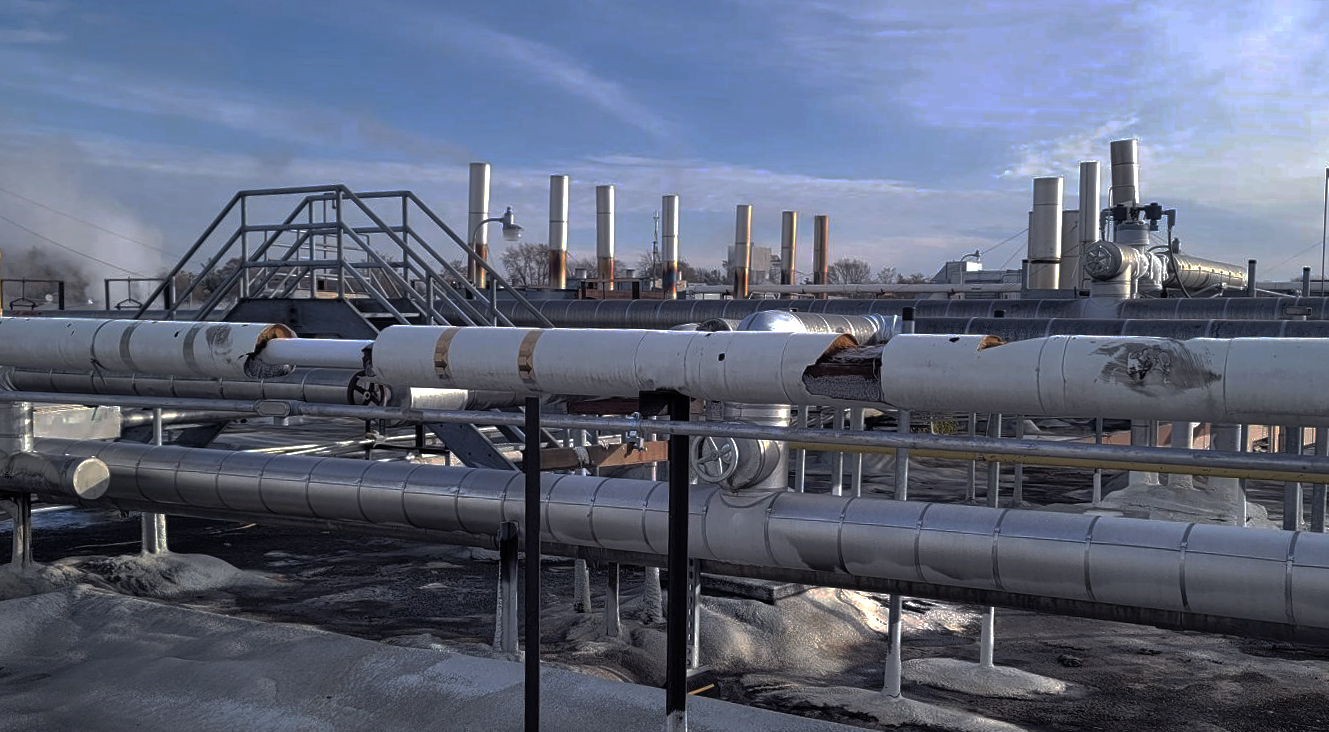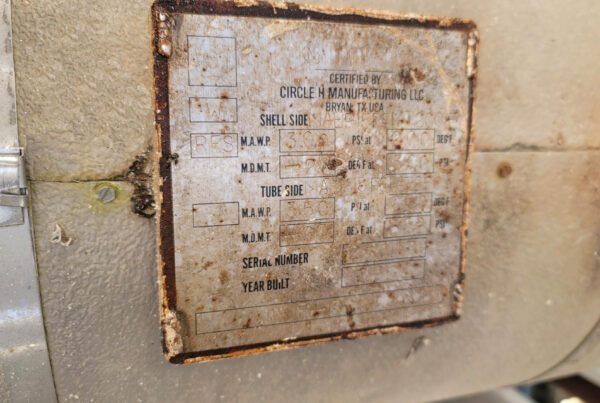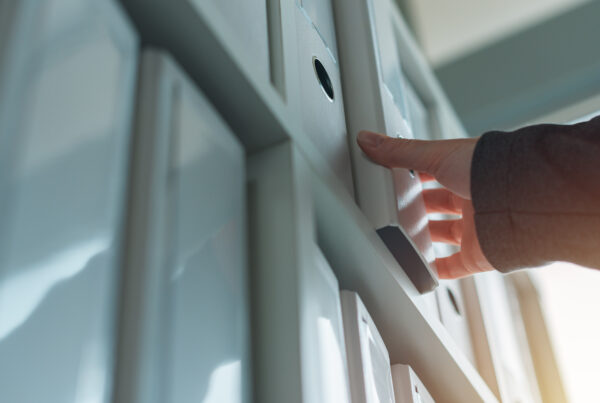Tips for Planning an Ammonia Insulation Intervention
How to Prioritize Maintenance on Compromised Insulation in Ammonia Systems
Refrigeration Insulation Systems
Insulation in an ammonia refrigeration system, typically found on tanks and process piping associated with major equipment, is essential for optimal efficiency and the life span of the pipe. When properly installed and maintained, it protects the pipe steel from corrosion by keeping the exposed surface safe from moisture, and supports the thermal performance of the process, reducing the energy load on equipment.
For industrial refrigeration, a well-designed insulation system consists of the following:
- A corrosion inhibiting gel properly applied to the surface of the pipe if it is carbon steel
- A low-thermal conductivity, rigid insulation that is properly sealed at joints and endcaps
- A low-permeance, water-resistant vapor retarder; insulation is highly permeable, making vapor retarder essential to protect the surface of the pipe from water vapor
- Protective jacket suitable for the environment
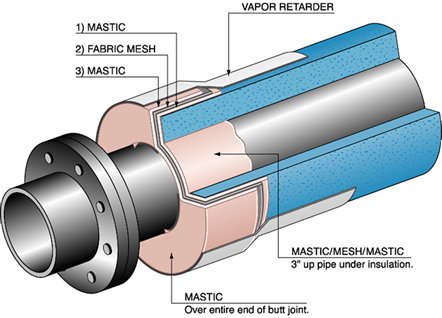
If any of the above are compromised, cold conservation and system efficiency is jeopardized, and the insulation is subject to water vapor exposure, threatening the integrity of the piping over time.
Compromised Insulation
Premier Insulation, a well-respected mechanical insulation contractor located in South Bend, Indiana, asserts that insulating recommended piping in a system can save your company $229 per year/linear foot on energy costs. However, if insulation is burdened by ice or moisture, one will spend an additional $166 per year/linear foot.
The company, which has over 40 years combined experience, recommends regularly inspecting for holes or gaps in jacketing or the vapor retarder, loose jacketing or banding (particularly at flanges and valves), and caulking failures.
While not every breach will have moisture present, if left unaddressed, you can guarantee it will occur. There is no one size fits all for how much moisture will infiltrate the insulation. While some coastal regions do experience a higher level of insulation moisture contamination due to the environment, the lowest and greatest potential for threat and resulting damage varies due to the many varying factors present in a refrigeration system.
Biological growth on the jacketing or insulation, excessive ice build-up, ‘sagging’ in the line, and more as noted in the article Predict and Pinpoint Threats to Your Piping, are all visual indications that moisture is present in your piping. However, far too often moisture in insulation will persist with no visual indications, fully concealed by the jacketing and insulation that propagate its existence.
As seen below, a study of non-destructive testing (NDT) performed on piping by GGS between June 2022 and May 2023 revealed that 38% of systems had approximately 5-11% of rogue moisture in piping insulation. We found the remaining 62% of systems were compromised by a range of 12% – 55% of piping with wet insulation. It is also important to note that zero systems visually revealed all trapped moisture.

Based on 20+ years of NDT findings on ammonia systems, in addition to damage, piping is most vulnerable to vapor infiltration at:
- the intersection of a pipe segment and major pieces of equipment
- before and after pipe direction changes (elbows, tees, reducers, etc.)
- wall and roof penetrations
- insulation terminations (i.e. – valve groups, end caps, etc.)
Because refrigeration piping usually operates at temperatures below ambient, water vapor will condense in the insulation wherever there is a breach in the vapor retarder. Any water that has entered the insulation will either freeze on the pipe if it is operating at or below 32°F, or it will remain a liquid that may travel considerable distances from where it was first introduced into the insulation. Once moisture enters the insulation, it becomes trapped against the pipe, vessel wall or valve, and corrosion under insulation (CUI), the primary damage mechanism that affects the integrity of ammonia piping, will eventually occur. If left unattended, the corrosion will persist and eat away at the exterior wall of the piping, thinning the metal to the point of failure.
Considerations for Intervention – Maintenance and Replacement
To ensure long-term performance of the insulation system, water vapor must be prevented from migrating into the insulation to protect the insulation materials, piping and components under insulation, and to mitigate reduced thermal performance.
Without data that clearly identifies the highest priority areas needing attention, many companies will triage replacement based on age. Some insulation systems were built with dated technologies or by a non-refrigeration contractor. We have regularly found armaflex insulation, which is designed for residential use, or insulation systems that are missing the vapor retarder, for example. These systems do need to be updated to support thermal efficiency improvements, however, the strategy of ‘replacement by age’ routinely results in unnecessary spending, and higher priority areas of the system are overlooked.
It goes without saying that the highest priority of the system should be areas with the greatest amount of metal loss on a pipe, vessel, or valve, because the component itself needs to be maintained or replaced to comply with mechanical integrity. A good NDT technology will quantify levels of loss on these components so you can prioritize, though it is important to avoid technologies that require a breach to the vapor barrier and access to the surface of the metal to test the thickness.
Further, to optimize spending, employ an NDT service that uses a technology like Radiometric Profiling that also allows you to see the moisture in the insulation throughout the line where corrosion is active. For example, if a section of pipe must be repaired or replaced, it is much more effective to know how much insulation has been compromised by moisture and plan for what needs to be replaced in advance.
If moisture has entered the insulation and corrosion is not yet active, but thermal efficiency is affected, a practical approach is to prioritize based on moisture saturation levels. Radiometric Profiling testing graphs reveal the volume of moisture, if it is present, at each location tested.
Below are examples of test locations on piping with ranging degrees of moisture in insulation. This quantitative data enables phased maintenance spending by tackling the areas with the greatest amount of saturation first.
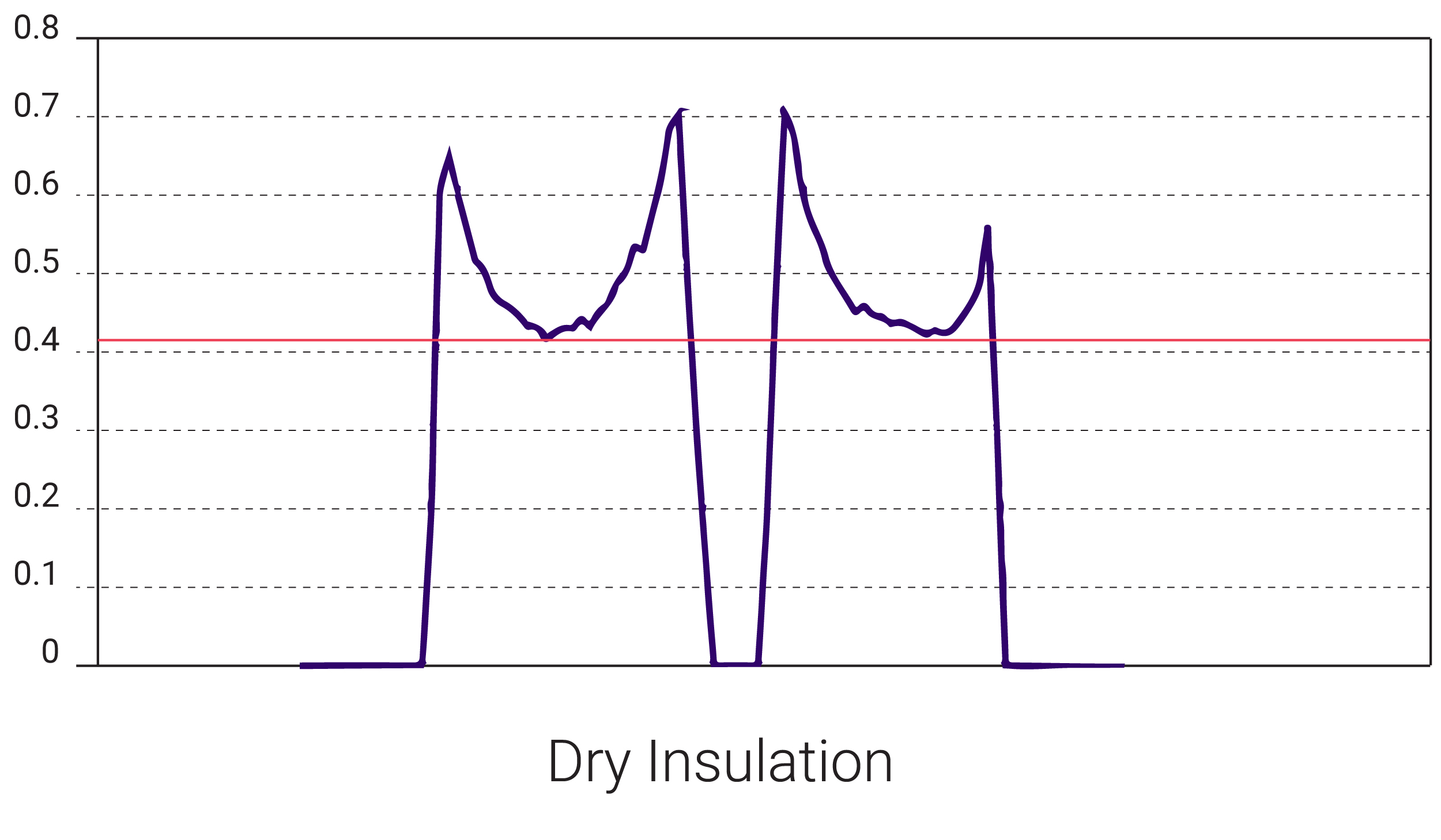

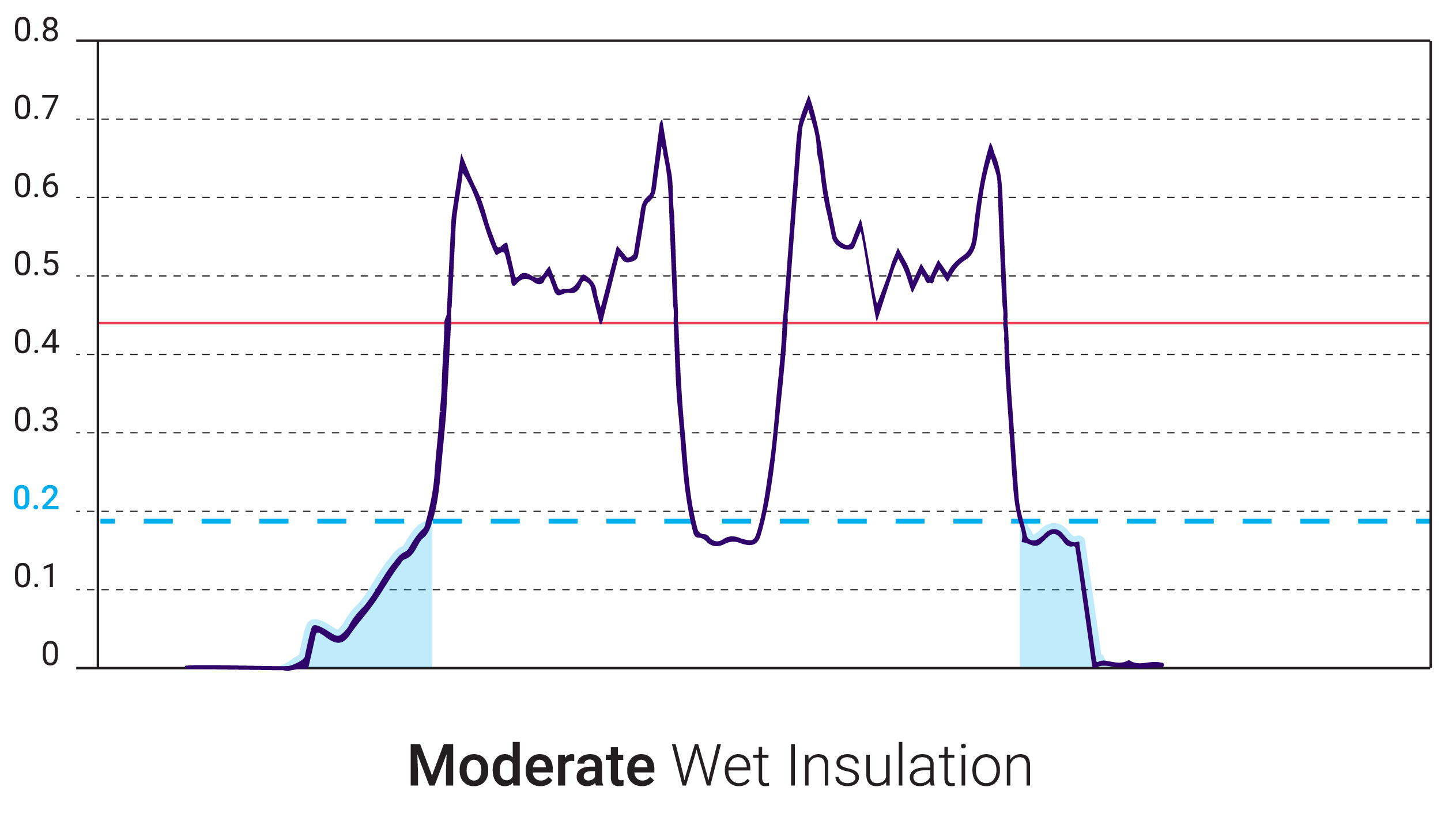
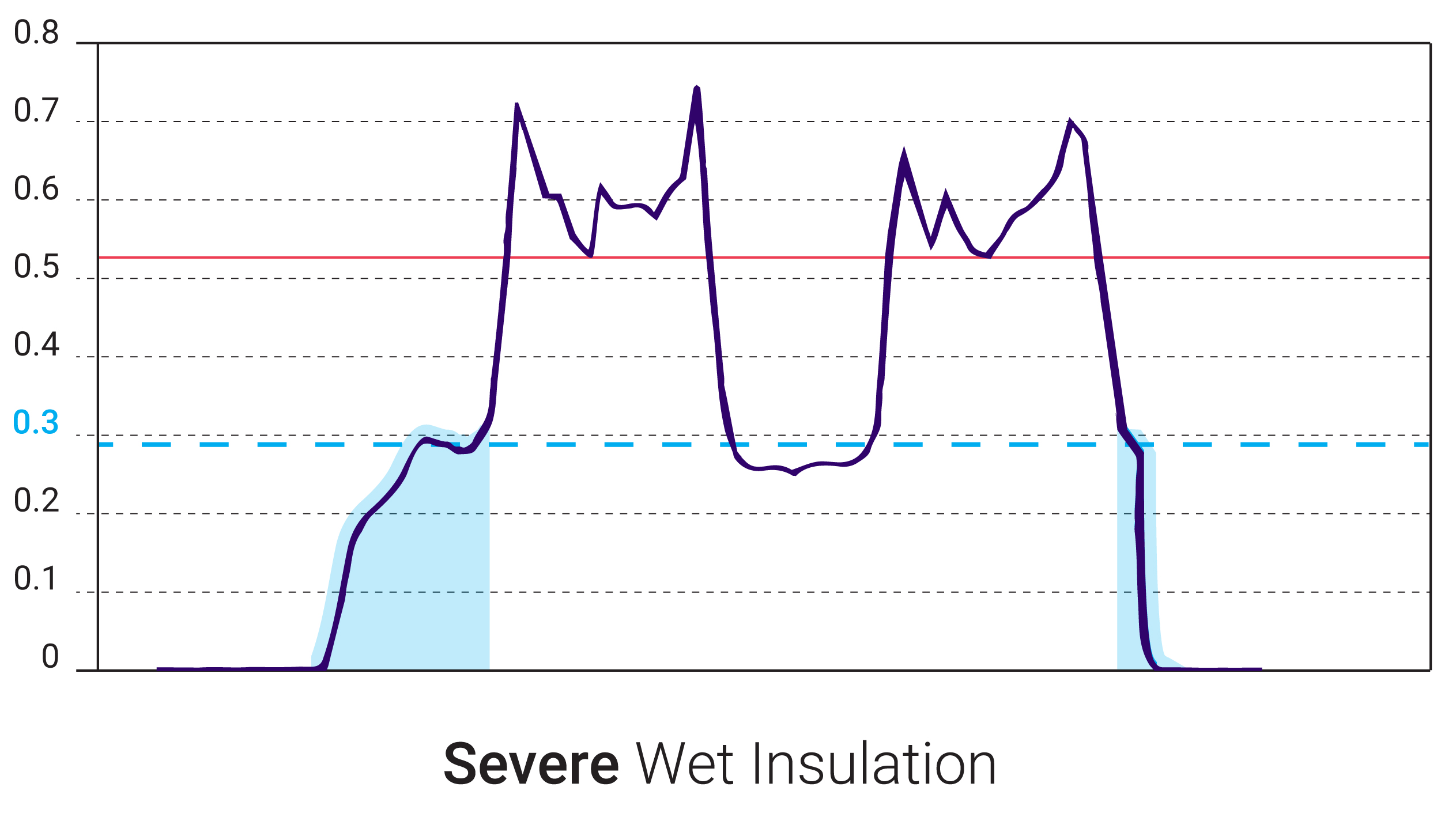
The low-hanging fruit in insulation system maintenance, hands down, are the areas where there are jacketing separations, holes, or poor caulking where moisture has not yet entered the insulation. While the vapor retarder may also need to be addressed in these scenarios, capitalizing on intervention at a time when the insulation can be preserved will result in significant savings.
Regardless of your insulation system management approach and the information available to you for decision-making, repairs should be made as soon as possible, and only by trained, experienced, and qualified insulators who are familiar with insulating refrigerated pipe and equipment.
